Rederij Doeksen
Rederij Doeksen was established in 1908 by Gerrit Doeksen and his elder sons. This tugcompany was founded to salvage ships along the northern coast of The Netherlands at the Waddenzee between Den Helder near the Northsea coast and the small island of Rottum near the German border. This sea is unique in the world, because it dries up largely every day in tidal changes, making it possible to walk to some of the islands instead of taking the ferry. This 'wadlopen' or Wad Walking takes the whole day and is very popular with Dutch holidaymakers. Also, Doeksen owned ships that were used as shell-suckers. The shells were sucked up by these ships from the sea for the chalk industry. This was a part of the company untill july 1975, when this industry did not need shells anymore and it was discontinued. From 1923, Doeksen is also running the passenger services between Harlingen, it's base in the province of Friesland in the northern part of The Netherlands, to Terschelling and Vlieland, two of the islands. At that moment the stocks of the NV Terschellinger Stoomboot Maatschappij (Steamship Company of Terschelling) were taken over, including their three passengerferries Minister Kraus, Prinses Juliana en Vlieland.
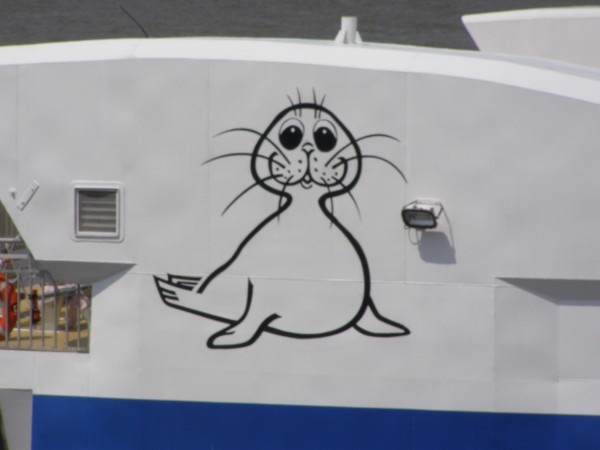
At that time, the crossing to the islands would take up to 3 hours, and there was only a normal connection to the island of Terschelling. Passengers for the other island Vlieland had to change boats at full sea, near a part of shallow water named the Vlieree, a hazardous undertaking. This connection to Vlieland originated from 1907, when a company named Alkmaar Packet took over an irregular service and the first small motorship Vlieland took passengers from Vlieland to the Vlieree, where they could change to the larger boats. This connection stayed alive untill 1962 in winter, although in the summermonths, a true connection between Harlingen and Vlieland was establised from 1938 onwards. Speed was a very important issue for the company, as stated in a picture postcard from the 1930's about the 'fastest passengership in Europe in her class'. This was about the salvaging-tug Holland. This tug could speed up to the astonashing 15 knots, and a passengersalon had been added to the poopdeck so she could be used for passenger-traffic to Terschelling during the summermonths when she was not working as a tug. After the second worldwar, tourism started to become more important for the small islands of Vlieland en Terschelling, so a new large tug was ordered, the new Holland that replaced the older ship. This ship was able to carry 700 passengers, although she was still also used as a tug off-season. Also, some new passengerships were built.
The Friesland shown below was built in 1956 and sailed for Doeksen between 1956 and 1988, before she was replaced by the new Friesland, shown lower down the page. She was able to ferry 1200 passengers between Harlingen and Terschelling, and was nick-named the 'Queen Of The Waddenzee'. She measures 591 tons and is 52,17 meters long. She was built in Alphen Aan Den Rijn in The Netherlands at the wharf of NV Scheepswerf en Machinefabriek Alphen P. de Vries Lentsch. In 1988, the ship was sold to Rederij Carolina as Carolina untill 1992 when she was replaced there by the ship below, also a former Doeksen ferry. Friesland recieved her old name again for Rederij Friesland, before being sold to the family owned Rederij Gebhard. For Gebhard, the ship was rebuilt in the original state and made pleasure cruises over the Oosterschelde in the province of Zeeland. From 2002 onwards, the ship was also used for the Historic Triangle, as a ferry for tourists between Medemblik (where she is shown here in july 2018, and Enkhuizen. The Historic Triangle is a combination day-program with this historic ferry in combination with the historic steamtram between Hoorn and Medemblik. From Enkhuizen, tourists can complete the triangle by returning with a modern train to Hoorn.
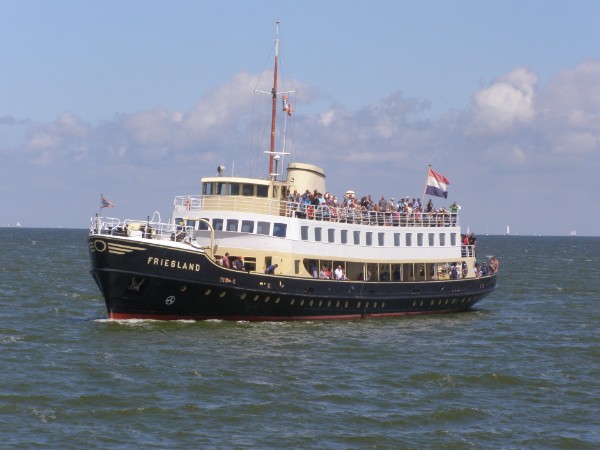
One of the other former ships of Doeksen is shown below as the partyship Carolina. She sailed for Doeksen between 1962 and 1990 under the name of Oost-Vlieland, named after the eastern part of the island of Vlieland. After this, the ship was sold as a partyship to replace the ship above and was finally sold to the United Nations in 2007 for the use as a ferry in Liberia. On the 28th of may 2008, the ship capsized in the port of Greenville in Liberia, taking the lives of two people. She was scrapped on the spot. A lot of people closely following the company, admired the little vessel as one of the most beautifull ships Doeksen had sailed with.
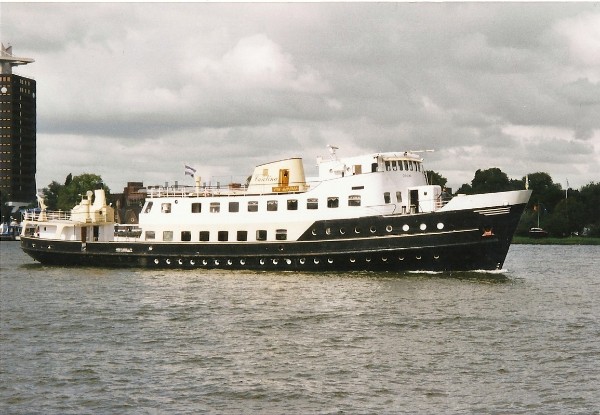
Below, I added two pictures of the fourth Holland in the fleet of Doeksen. This was a tug, built in 1952. But in the most busy seasons on the ferryroutes, the ship was also used as a passengerferry. The passengertug sailed for Doeksen untill 1975, when the salvagework north of the islands was declining. Also, in that year the company sold their last shell-sucking ship, so they solely concentrated on the passengerferries. Untill then, the passengerservices had been the least important part of the company. Untill 1999, Holland sailed for the Dutch Rijkswaterstaat, a company taking care of the Dutch waterways. She sailed for them as a researchvessel and her towinggear was removed. After 1999, an initiative to save the ship from scrapping was succesfull and she now sails as one of the last examples of a large fifties-built sea-going tug under the banner of the Stichting Zeesleepboot Holland. The pictures below were made at the 31st of august of 2008 at the harbourfestival at IJmuiden.
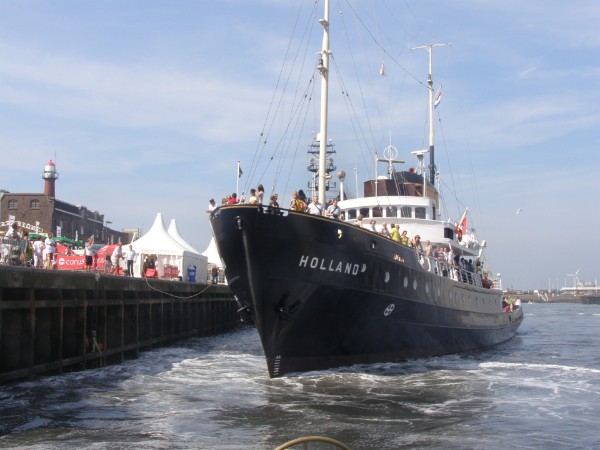
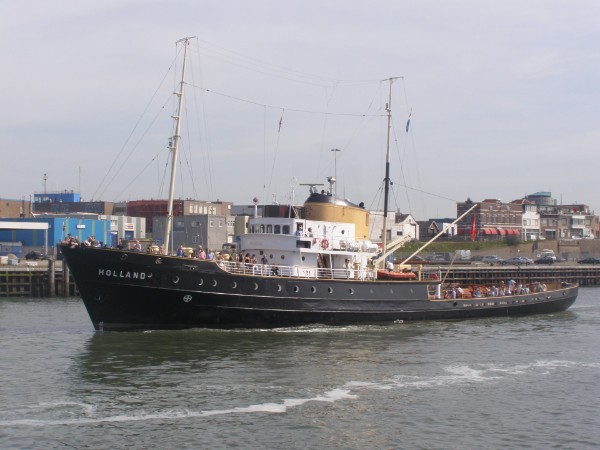
In 1973, Doeksen introduced a twin-hulled catamaran, the first Koegelwieck. This ship was significantly faster and in fact she was the first ship of this kind in The Netherlands. The passengerfleet kept modernizing and ships grew larger when the tourism trade really started off. At this moment, Doeksen uses five passengerferries and one freightferry. The passengerferries are Friesland, Vlieland, Midsland, Koegelwieck and Tiger, the latter two being the fastships, the catamarans. The freighter is the Noord-Nederland.
Since 1923, Rederij Doeksen had the only connections to Terschelling and Vlieland but because of a new law, other firms were allowed to come into being. In 2008, a company called Eigen Veerdienst Terschelling (EVT) or translated Own Ferryservice of Terschelling was formed to offer a service between Harlingen and Terschelling in direct competition with Doeksen. Doeksen was not amused and the story about that can be found at the page dedicated to EVT.
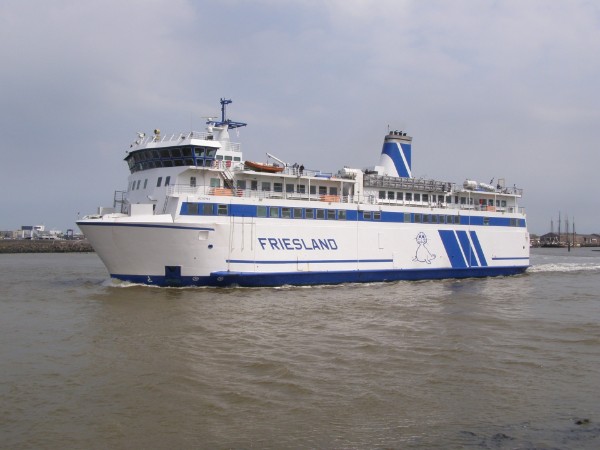
The Friesland is a very handsome looking small ferry, resembling the larger European ferries built in the 1970's and early 1980's. She was launched at the 19th of december 1988 from the Van der Giessen-De Noord wharf at Krimpen aan den IJssel in the Netherlands. It was the second time the name was used within the company, and her trials to Terschelling became national headlines when the ship was refused to dock at Terschelling by Rijkswaterstaat, a governmental body overseeing the Dutch waterways, because of her size. They were afraid that the ship would cause damage and Doeksen had to lay up the new ship at Harlingen. Her first sailing finally took place at the 30th of june 1989 and since then she is a regular for the route. She has accomodations for 1750 day-passengers and 120 passengercars. Friesland is 68,79 meters long and she is measured at 3.583 tons.
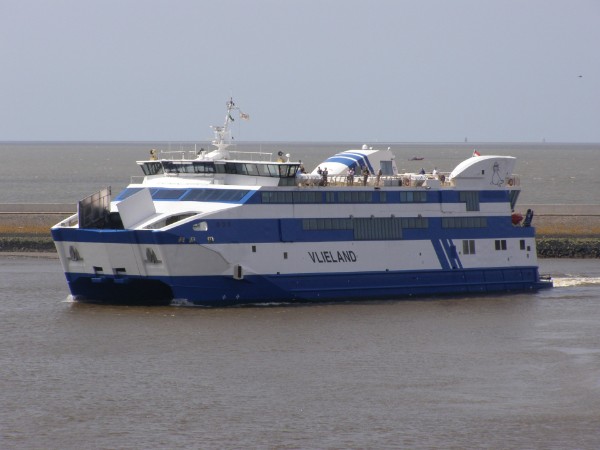
Vlieland is a catamaran, used on the route between Harlingen and Vlieland. She was built at FMBA Marine Inc. at Balamban on the Philipines in 2004. She was launched at the 27th of january 2005 and sailed on her own power to The Netherlands departing the Philipines at the 11th of may of that year. She arrived at Harlingen on the 17th of june. There she was fitted out for the service and stated hr sailings on the 20th of july. This ship is also used as a reseachvessel for plancton at the Waddenzee from may 2009 onwards for the University of the Dutch town of Wageningen. The ship has accomodations for 1200 deckpassengers and 57 passengercars. Hereby is noted that on the island of Vlieland cars are not allowed with exeption for the people who live on the island.
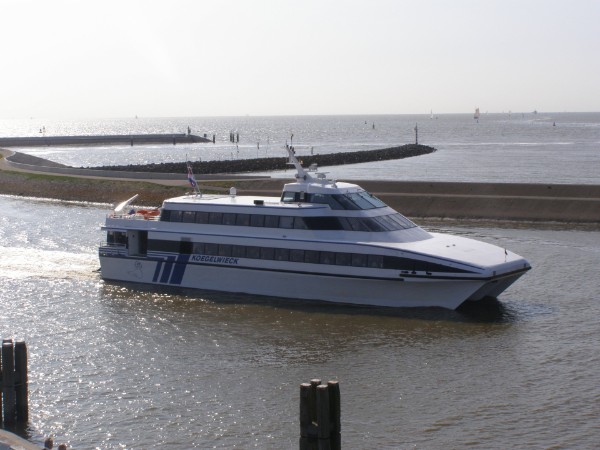
Built in Norway, at the Harding Verft at Rosendal as yardnumber 262, Koegelwieck is the second ship of this name for Doeksen. The ship was launched at the 5th of june 1992 and can accomodate 312 passengers who are seated the same way as they are in an aircraft. There is no capacity for cars onboard and she is used in the fast-service to both islands, as well as in between the islands. Her topspeed is 32 knots, and she is stated as being a catamaran, although because she also has a small hull in the center can also be named a trimaran. The ship is 35 meters long and is named after a part of Terschelling devoted to nature.

